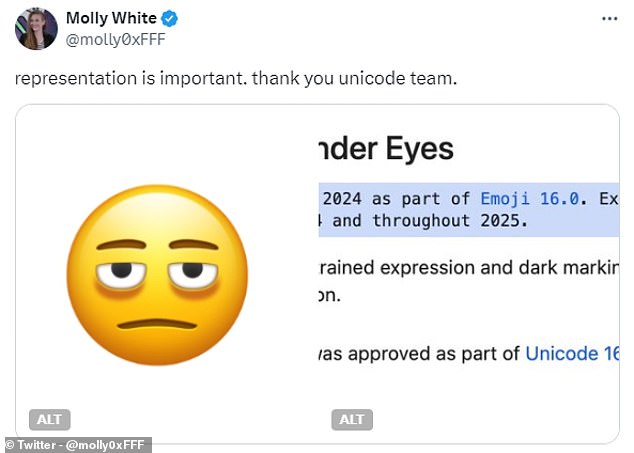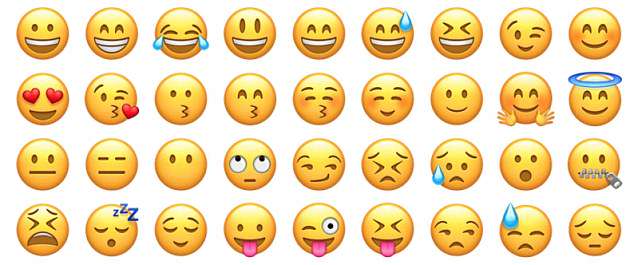Revealed: The 8 new emoji officially coming to your smartphone next year – including one character that X users claim they’ve been ‘seen’ with
From friendly smileys to mischievous peaches, emojis are a staple in many of our everyday messages.
Eight new emoji have now been confirmed for version 16.0 of the Unicode Standard.
This includes a harp, a shovel and a mudguard, as well as a face with bags under the eyes.
While users will have to wait until next year to use the new emojis, they have already caused quite a stir on social media.
“Representation is important. Thanks Unicode team,” one user joked, referring to the new face with bags under her eyes.
From friendly smileys to cheeky peaches, emojis are a staple of many of our daily messages. Now, eight new emoji have been confirmed for version 16.0 of the Unicode Standard

One user took to X (formerly Twitter) to express his excitement about the new face, joking: ‘I finally feel truly seen’
The newest emoji have been confirmed by the Unicode Consortium and include a face with bags under its eyes, a fingerprint, a splash, a root vegetable, a leafless tree, a harp, a shovel, and the flag of Sark, an island in the English Channel.
“Unicode version 16.0 has been released!” the Unicode Consortium tweeted.
‘This brings the total number of characters to 154,998!’
The addition of the flag for Sark is surprising, because as the Unicode Consortium itself admits, the Consortium decided back in March 2022 to no longer add new flag emojis.
Emojipedia at the time pointed out the “ephemeral nature” of many flags and the “challenges of recognizing certain identities while excluding others.”
Keith Broni, editor-in-chief of Emojipedia, said, “This policy remains in effect, although Unicode did indicate at the time this policy was announced that additional national/regional flags might emerge in the future.”

“Representation is important. Thanks Unicode team,” one user joked, referring to the new face with bags under her eyes

The new emoji will be released in the coming months and in 2025. However, several users have already taken to X (formerly Twitter) en masse to express their enthusiasm for the emoji with the ‘face with bags under the eyes’.

Another enthusiastic user added: ‘the perfect answer for any interaction on Slack, no matter what’
The new emoji will appear in the coming months and throughout 2025.
However, several users have already expressed their enthusiasm en masse on X (formerly Twitter) about the ‘face with bags under the eyes’ emoji.
“I finally feel seen,” one user tweeted.
Another added: “the perfect answer for any interaction on Slack, no matter what.”
And someone joked: ‘Finally an emoji that reflects my permanent mood.’

